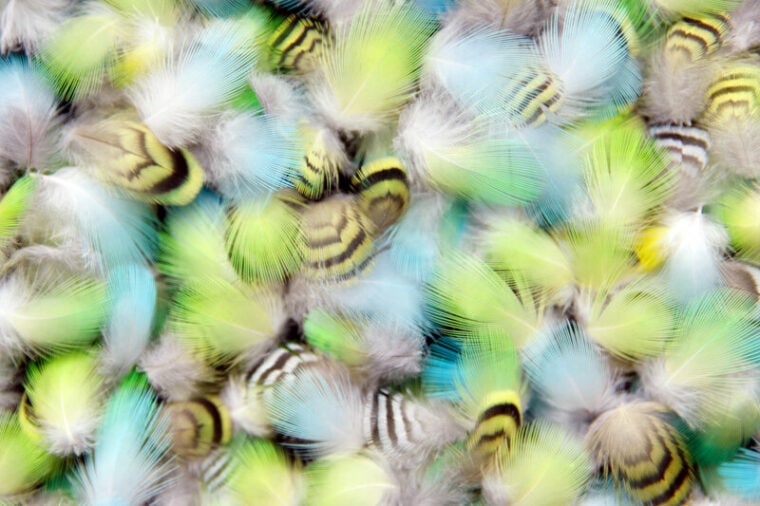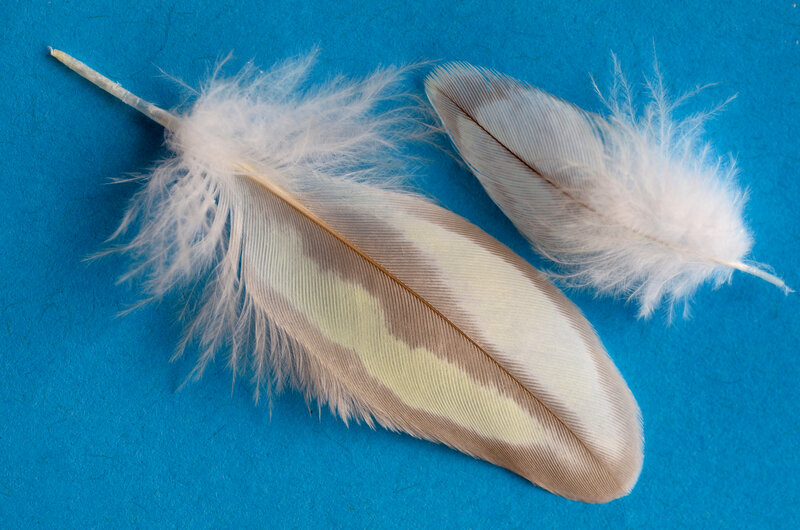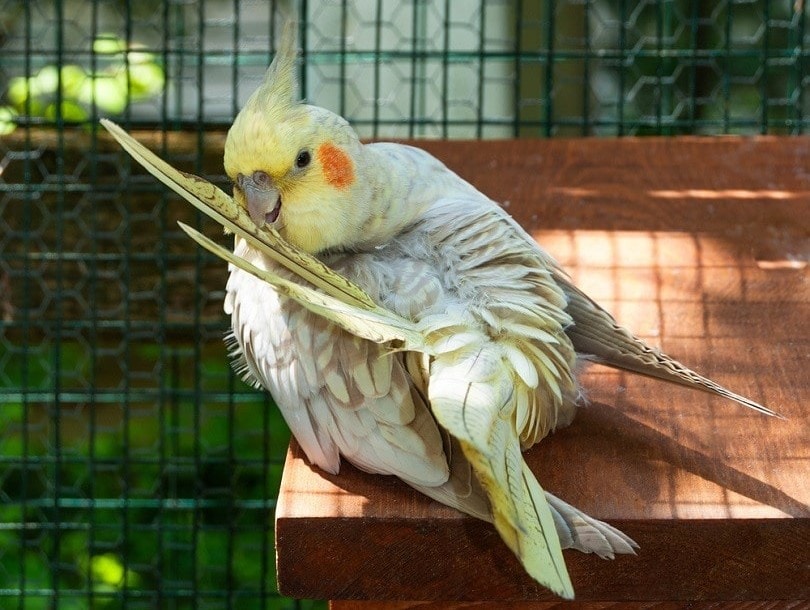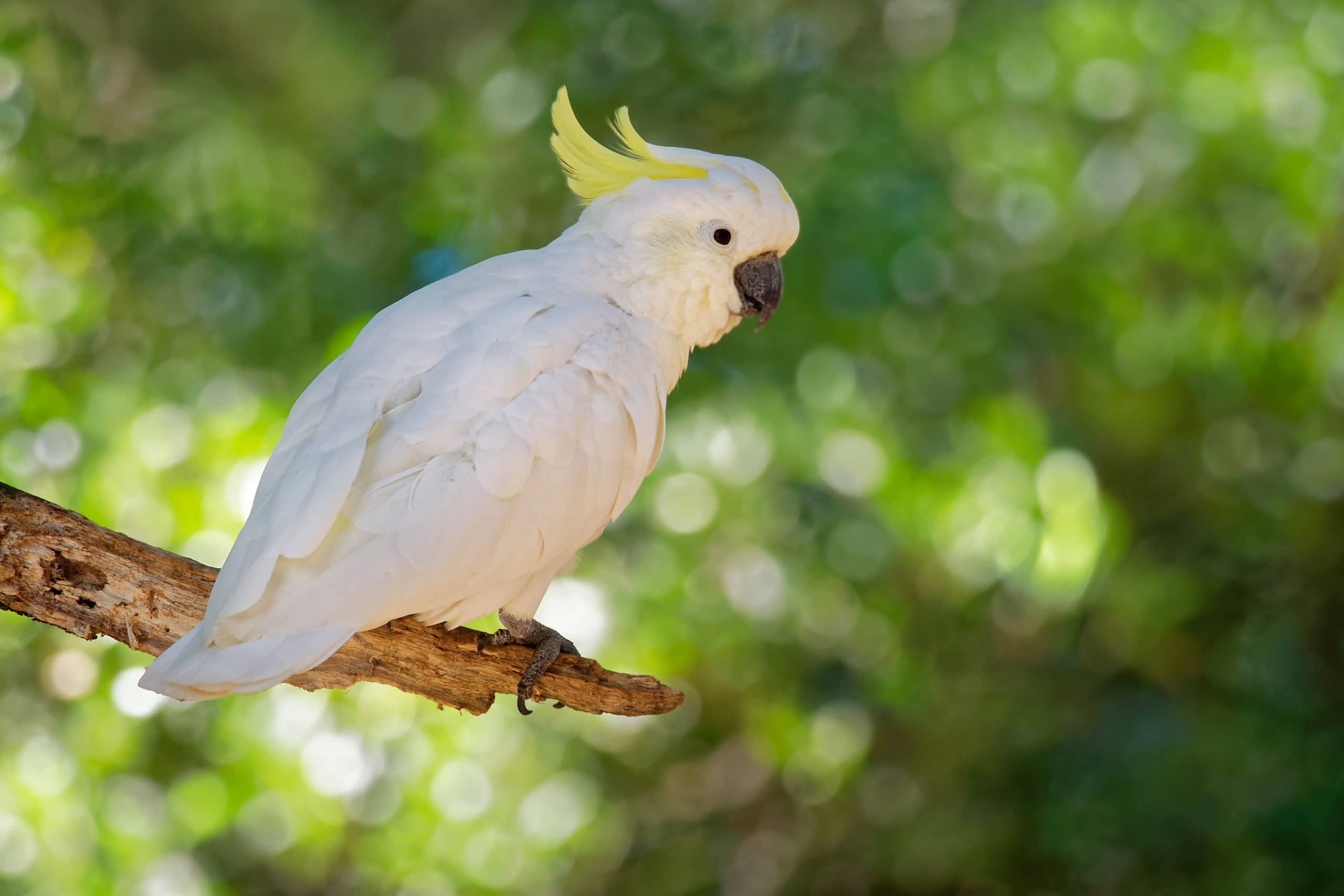
Feathers are arguably the most beautiful and unique feature of any pet bird. They’re exceedingly complex and serve many vital functions. So, if you’re a new bird owner, you might start panicking when you notice a pile of feathers at the bottom of your pet’s cage. Are they sick? What’s going on?
Molting is a natural process that happens to every species of bird that involves shedding old, inefficient feathers to make space for new ones. Keep reading to find our care guide for getting you and your bird through its first molt.
What Is Molting?
Molting is an entirely normal process that every bird goes through. It occurs when your bird starts shedding its old feathers to make space for new ones. Feathers are dead structures that cannot repair themselves if they become damaged.
Think of your bird’s feathers as our fingernails. Our nails grow under our skin, and as new cells form, they push old ones out. The part of our fingernail that we can see is made of dead keratin cells. Unlike our hair, feathers do not continue to grow, so the follicles will not send signals when it’s time to develop a new feather until the old one has been removed.
Molts can be complete (when all the feathers are replaced over the same molting period) or partial (when only some of the feathers are replaced).
Molting typically occurs once or twice a year but can happen more or less depending on the species. Some larger parrots may molt only once every two years because the entire process takes much longer for them than for other species. Smaller parrot species can molt up to three times a year because it takes less time to complete the molting process.

What Are the Signs of Molting?
There are several telltale signs that your bird is molting. Aside from the obvious feathers lying around its cage, there are some behavioral changes you’ll need to be on the lookout for.
Of course, these symptoms can be present with other conditions. If you don’t notice any feather loss, you may want to consult your avian vet for advice.

What Are the Causes of Molting?
In the wild, molting is highly variable. Different species will molt at different times, though it is mostly driven by the changing seasons, migrations, nutrition, or reproduction. Wild birds will most often begin molting when seasons change or the day length changes. Most molts happen in the spring and fall, not during breeding or migratory seasons.
Birds in captivity are not exposed to seasonal light and changes in day length. Instead, we expose them to artificial light sources that we control with the flick of a switch. Our schedules can change daily; therefore, so will our birds. Your bird’s exposure to various light cycles may cause irregular or incomplete molts. Sometimes captive birds may molt continuously or only once every few years.

How Do I Care for a Bird That’s Molting?
Molting is an uncomfortable process that’s likely to cause your bird to be irritable and itchy. However, there are several things you can do to help make the process easier.
1. Feed a Nutritious Diet
The most important thing you can do for your molting bird is to ensure it gets the nutrition it needs through the energy-depleting molting process. Of course, it’s crucial for you to be feeding a nutritionally sound diet all year round, but there is an increased demand for certain nutrients during a molt that you need to be aware of.
Try to increase how much food you’re offering by 25%. Your bird will need extra protein, calcium, and iron while it molts, as growing new feathers involves a lot of energy and nutrients.
2. Mist Your Bird
Misting your bird with room-temperature water once or twice a day can help relieve some itchiness. Misting also softens the sheath surrounding pin feathers, making them easier to remove when it’s time.
Most birds enjoy a weekly misting even when they’re not molting, as it replicates rainfall.
3. Let It Rest
Molting can bring out the sassy side of even the sweetest of birds, so if yours is acting a bit more aggressively than usual, know that it’s normal. You would be pretty miserable if you were itching 24/7, too. Let your bird rest more than usual, and do not disturb it while it’s asleep. Place its cage in a dark room where it can sleep 12 or 13 hours a day while it molts.
4. Be Careful With Newly Growing Pin Feathers
Pin feathers (also known as blood feathers) will start growing when your bird molts. These feathers have a blood supply flowing through them. These feathers will eventually grow to replace your bird’s full plumage, but they’re very sensitive and susceptible to puncture during a molt. Pin feathers have veins, and injury to these developing feathers can cause life-threatening blood loss.
5. Distract It
Your bird is likely to feel grumpy during its molting process, so you can do your part in relieving this grouchiness by providing them with fun and safe toys. In addition, playtime can distract it from its itchiness and release happy hormones to relieve molting-related stress.
Frequently Asked Questions (FAQs)
Why do birds molt?
The molting process is essential for birds as it restores their plumage and keeps their feathers in tip-top shape. Feathers are subject to wear and tear because they’re constantly exposed. Eventually, the feathers will become ineffective at performing their biological functions. Complete plumage helps birds fly better, aids in temperature regulation makes courting a mate easier and provides protection.
What do I do if my bird’s feathers are growing back abnormally?
If you notice abnormal feathers during your bird’s molt, it’s time to call your vet. Some bird species can develop a virus called Psittacine Beak and Feather Disease (PBFD). This condition attacks your bird’s immune system and affects the cells responsible for beaks and feather growth.
How can I tell if my bird is molting or plucking?
Some birds will start to pluck their own feathers, whether it’s out of boredom, due to stress, or because they want to get your attention. Some believe that birds get a wave of euphoria and endorphins after they pluck a feather which is why this behavior can become obsessive. This is a very unhealthy habit and can be challenging to stop. In addition, repetitive plucking will cause bald patches and can even damage follicles, so new feathers won’t ever grow back.
A plucking bird will spend much time with its beak buried in its feathers. You may mistake this for preening (a normal and healthy grooming behavior), but if you keep a close eye on your pet, you may notice that it’s focusing on a specific area. When birds aren’t molting, their feathers are quite embedded, so a plucking bird may squawk out in pain as it’s pulling the feathers out.
Birds that pluck will have bald patches or sections with only thin-down feathers. They often begin with their chest and wings, so keep a close eye on these areas if you notice your bird spending much time there.
Plucked feathers will also appear chewed up or broken.
How long does molting last?
The length of the molting process varies depending on bird species. However, the process typically lasts a few weeks or even months.
Conclusion
Molting is an entirely normal, albeit uncomfortable, process every bird goes through once a year. You’ll need to recognize molting as a bird owner so you can keep a closer watch on your pet to ensure everything is progressing as it should be. If you’ve never experienced a molt with your bird before, you may want to speak to your vet for peace of mind and further advice. The most important thing you should do is provide proper nutrition to keep your bird’s natural processes advancing as they should.
See Also:
- How to Recognize a Sick or Dying Pet Bird (10 Signs to Look For)
- 6 Common Reasons For Feather Loss in Parrots: Avian Facts & FAQs
Featured Image Credit: Natalia Minovalova, Shutterstock










